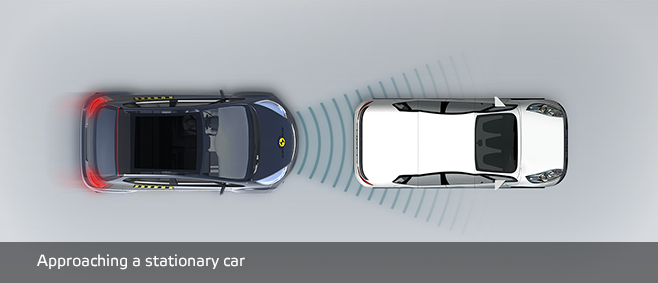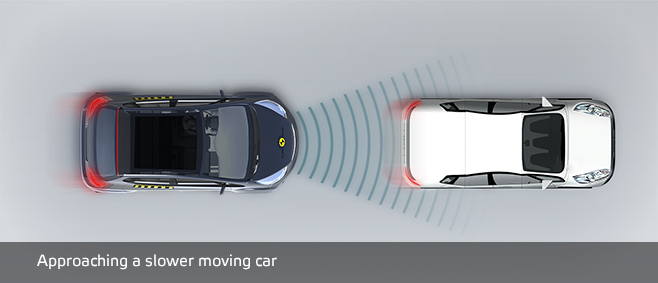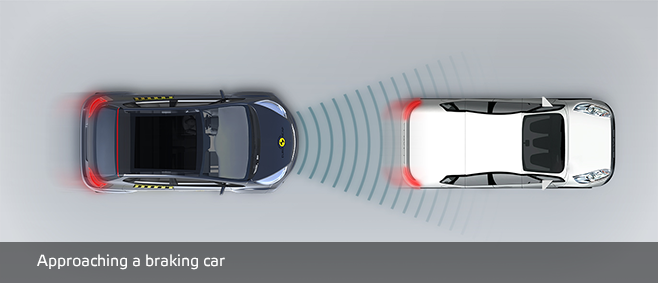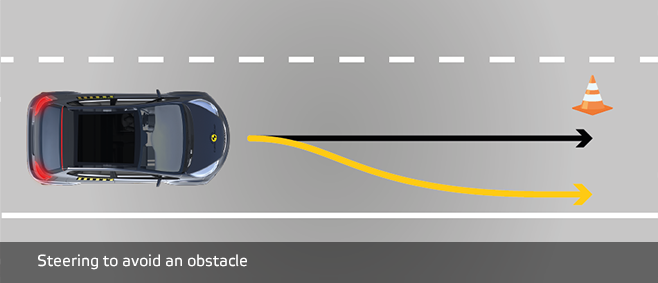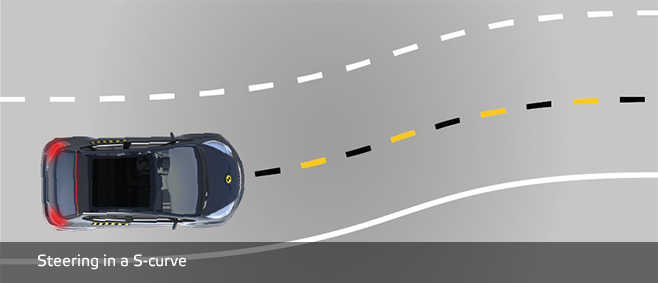2018 Automated Driving Tests
What are Automated Driving Systems?
Cars are becoming more advanced as manufacturers work towards their goal of autonomous vehicles that will drive themselves. Self-driving cars still have a long way to go but driving support technologies are becoming widespread, even in everyday cars. These systems help the driver to maintain a steady speed, to keep a safe distance from the car in front and to keep the vehicle in the centre of the lane by combining (intelligent) Adaptive Cruise Control (ACC) with Lane Centering (LC).


The benefit for drivers is that they are supported in driving safely and encounter less stress.
Legally, systems capable of continuously supporting the driver in both longitudinal and lateral control are referred to as
Automated Commanded Steering Function (ACSF), Category B1.
DRIVING SUPPORT TECHNOLOGIES ARE BECOMING WIDESPREAD,
EVEN IN EVERYDAY CARS.
In the context of automated driving they are often referred to as Level 2 systems following the classification of the Society of Automotive Engineers. Euro NCAP calls these systems simply Driver Assist Systems as they are designed to assist the driver, not to take control. The driver is expected to keep his hands on the wheel and his eyes on the road at all times. Currently, systems that would allow drivers to take their hands off the wheel for extended periods of time or to perform secondary tasks are not allowed on our roads.
These systems are designed to assist the driver,
not to take control.
The technologies available on the market today are mostly designed for use on well-marked roads such as motorways. However, this does not mean that these systems cannot be activated on other types of roads where the manufacturer recommends they should not be used and where their use would be inappropriate. A good support system will assist the driver to drive safely without leading to overreliance on the system. It will effectively monitor system misuse, such as hands-off driving and remind the driver to remain attentive. The driver needs to enable the system for each journey, unlike intervention systems like autonomous emergency braking (AEB) or Lane Keep Assist.
The driver is expected to keep his hands on the wheel and his eyes on the road
at all times.
About the Tests
Highway Assist systems support the driver in monotonous driving situations on motorways and may adapt the driving speed automatically according to curves in the road, speed limits and surrounding traffic. To give consumers a more realistic insight into the capabilities of current systems on the market, Euro NCAP has developed tests to assess their performance in critical traffic scenarios simulated on a test track environment.
Adaptive Cruise Control Tests
Adaptive Cruise Control (ACC) is a system that automatically adjusts a car’s cruising speed in response to a slower-moving vehicle ahead, maintaining a safe distance. ACC operates independently of and in addition to other driver assistance systems, already assessed by Euro NCAP, such as AEB and lane assistance which continue to function in the background. The ACC element of automated driving is tested in an extended version of Euro NCAP's autonomous emergency braking (AEB) system test, with approach speeds that match those typically seen on European motorways. These systems are designed to automatically adapt the speed when approaching a slower moving vehicle or one that is braking and, in general, they perform very well in such tests. However, not all systems perform equally well in tests where the vehicle is approaching a vehicle which has stopped as current algorithms have difficulties identifying stationary objects.
The most challenging tests for highway assist systems are the ‘cut-in’ and ‘cut-out’ scenarios. In the cut-in test, a car from the adjacent lane merges into the lane just in front of the test car. This is something that happens in everyday traffic and an alert driver will typically anticipate the manoeuvre early and reduce speed accordingly. For the cut-out scenario, a car in front leaves the lane abruptly to avoid a stopped vehicle ahead, leaving the system only a short time to identify and respond to the situation.
Cut-in scenario

Cut-out scenario

Steering Support Tests
A second set of tests has been developed to evaluate the Lane Centering function that continuously supports the driver to keep the car in the middle of the lane. The amount of steering support provided by each system is determined in a so-called S-bend test at various speeds. A good driver support system will continue to support the driver during the manoeuvre and will not resist the driver or deactivate. Another test measures the amount of steering effort needed by the driver to swerve around a small obstacle on the road.
All automated driving tests are performed on a test track with well-marked lanes and, for the cut-in and cut-out tests, make use of a robot-controlled ‘dummy’ vehicle to ensure good repeatability.
Speed assistance is another function that will be required if cars are to become self-driving. Current systems range from the very simple, in which the driver sets the speed to which the car should be limited, to the sophisticated. Intelligent speed adaptation (ISA) uses digital map data and/or visual data from a camera to identify the ‘local’ speed limit and, at the driver’s discretion, can limit the speed accordingly. Speed assistance systems are currently included in Euro NCAP’s regular vehicle assessments and no further tests have been done here. Only some of the cars tested here were equipped with intelligent speed adaptation.
Besides testing the system’s main functions, Euro NCAP is verifying the information provided by the manufacturer in media, commercials or in the user’s manual to check that no false or exaggerated claims are being made, and that the information on the system and its limitations is sufficiently clear and complete.
About the Results
Euro NCAP has not included Automated Driving systems yet in the safety star rating as we are still learning how these systems are currently designed, what their physical limitations are, and what safety benefit can be expected.
Instead, Euro NCAP focuses on providing information about the current state-of-the art and comments on the design strategy taken by the car manufacturer, within the context of what is legally allowed according to European regulation.
Does it work?
When used as intended, Highway Assist systems can provide the driver with a more comfortable, less stressful driving environment and help keep a safer distance from the vehicles in front. Systems responded differently in the test scenarios. Different approaches led to differences in the balance between driver and car input, and the likelihood of overreliance on the system. In the more challenging cut-in and cut-out scenarios, a collision can only be avoided with the help of an alert driver who can react in time.
This first test series on Driver Assist systems clearly shows that these systems are neither autonomous nor self-driving, but simply provide assistance. Besides the inherent redundancy that comes from having a human being behind the wheel, it is imperative that state-of-the-art passive and active safety systems remain available in the background as a safety backup.
